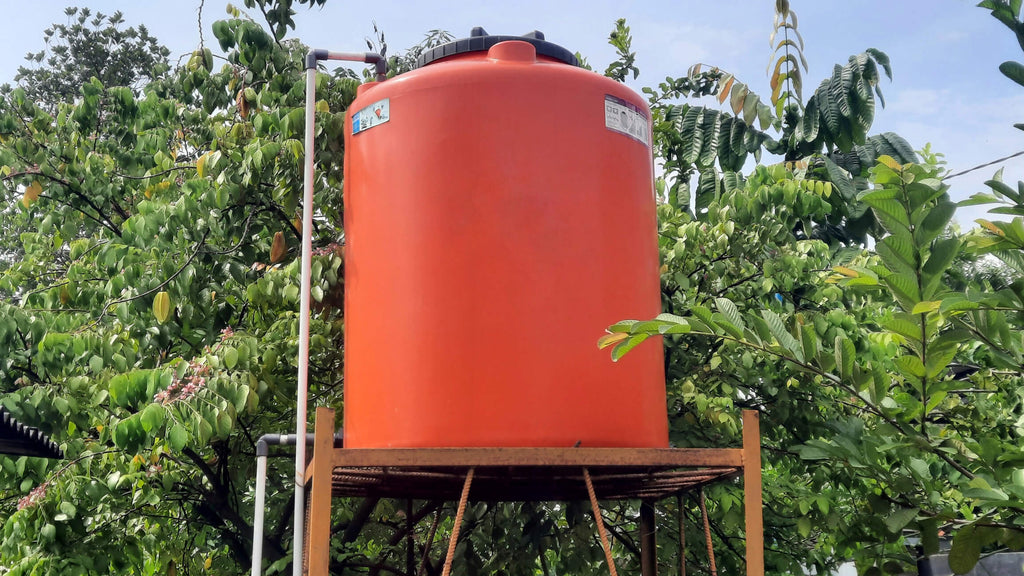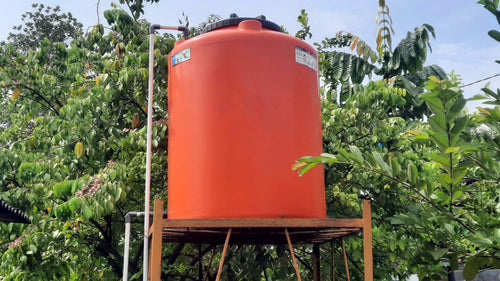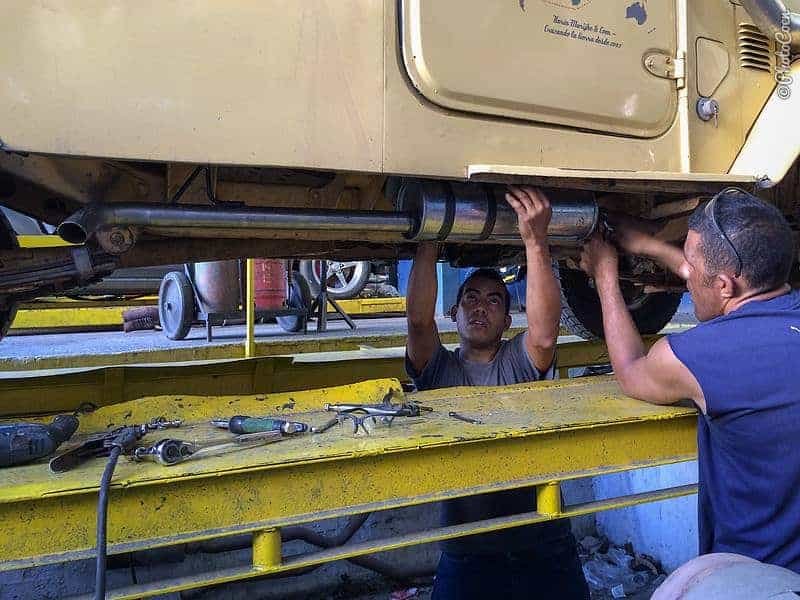Maintaining a reliable water system is crucial for any setting. The Guianas offer unique challenges and opportunities in this regard.
In this second part of our series on overhauling water systems in the Guianas, we focus on water canisters, water tanks, and sinks. These elements play a vital role in ensuring access to clean water. Whether you are upgrading an existing setup or starting from scratch, knowing the best practices and options available can make a huge difference.
This guide will help you understand how to choose and maintain water canisters, set up efficient water tanks, and install functional sinks. Stay with us as we dive into the details that can transform your water system for the better.
Guianas Overhaul Introduction
The Guianas Overhaul is an exciting project aimed at improving water management. In this blog post, we will explore the details of Overhaul Guianas Part 2. We will focus on water canisters, water tanks, and sinks. This introduction will give you an understanding of the background and objectives of this project.
Project Background
The Guianas region has long faced water management issues. Communities struggle with access to clean water. Old infrastructure complicates the problem. The Overhaul Guianas project aims to address these challenges. It seeks to provide sustainable solutions. By upgrading water systems, the region can improve its quality of life. The project started with a thorough assessment of current systems. Experts identified key areas that needed attention. The focus now is on water canisters, tanks, and sinks.
Objectives
The primary objective is to ensure clean water access. This involves upgrading water canisters. These canisters will be more durable and efficient. Another goal is to install new water tanks. These tanks will store more water and maintain its quality. Lastly, the project aims to improve sinks. Better sinks mean easier access to clean water for everyday use. These objectives will help the Guianas achieve better water management. They will lead to healthier communities and a better environment.
Water Canisters Overview
Water canisters are essential for ensuring a safe and reliable water supply. They are useful in homes, offices, and outdoor activities. Knowing their types and materials helps you choose the best one for your needs. This guide will provide you with an overview of water canisters.
Types Of Water Canisters
Water canisters come in various types. Some are for personal use, while others are for group activities. Portable canisters are lightweight and easy to carry. They are perfect for camping or hiking. Stationary canisters are larger and designed to stay in one place. They are ideal for homes or offices.
Materials Used
Water canisters are made from different materials. Common materials include plastic, stainless steel, and glass. Plastic canisters are lightweight and affordable. They are suitable for short-term use. Stainless steel canisters are durable and resistant to rust. They are great for long-term use. Glass canisters are non-toxic and easy to clean. They are perfect for storing water at home.
Water Canisters Installation
Ensuring your water canisters are installed correctly is crucial for safe and efficient water storage. This guide will walk you through the process of installing water canisters for your Overhaul Guianas Part 2 system. Let’s dive into the steps and safety measures you need to follow.
Installation Steps
- Prepare the Area: Select a clean, flat surface. Ensure there is enough space around the installation site.
- Unbox the Canisters: Carefully remove the canisters from their packaging. Inspect them for any damage.
- Position the Canisters: Place the canisters upright in the designated area. Make sure they are stable and not tilted.
- Connect the Inlet Hose: Attach the inlet hose to the top of the canister. Tighten the connection securely to prevent leaks.
- Connect the Outlet Hose: Attach the outlet hose to the bottom of the canister. Ensure this connection is also secure.
- Test for Leaks: Fill the canisters with water. Check all connections for any signs of leakage. Tighten as necessary.
Safety Measures
- Use Proper Tools: Always use the appropriate tools for tightening connections.
- Wear Safety Gear: Gloves and safety goggles can protect you from potential hazards.
- Check for Stability: Ensure the canisters are stable and not at risk of tipping over.
- Avoid Over-Tightening: Tighten connections firmly, but avoid over-tightening which can cause damage.
- Regular Inspections: Periodically check the canisters and connections for any signs of wear or damage.

Credit: www.freshwatersystems.com
Water Tank Integration
Water tank integration is essential for optimizing your water system. This section explores the specifications and integration process of water tanks in the Overhaul Guianas Part 2 Water Canisters Water Tank Sink setup.
Tank Specifications
The water tank must meet specific criteria. Capacity, material, and durability are key factors. Choose a tank with sufficient capacity. Consider the material to ensure it is safe and durable.
Stainless steel and BPA-free plastic are good options. They offer longevity and safety. Also, check the tank’s dimensions. It should fit seamlessly into your existing setup.
Integration Process
Integrating the water tank involves several steps. First, prepare your space. Make sure it is clean and accessible. Next, position the tank securely. Ensure it is stable and level.
Connect the tank to your water system. Use appropriate fittings and pipes. Check for leaks once connected. Tighten fittings if necessary. Finally, test the system. Run water through the tank to ensure smooth operation.
Regular maintenance is crucial. Clean the tank periodically. This prevents contamination and ensures optimal performance. Follow these steps for successful water tank integration.
Water Tank Maintenance
Maintaining your water tank is essential for the longevity of your water system. Proper maintenance ensures clean water and prevents costly repairs. Here is how to keep your water tank in top condition.
Routine Checks
Regular inspections are key. Schedule routine checks at least once a month. Look for any signs of wear or damage. Clean the tank regularly to prevent algae and sediment build-up.
- Check for leaks
- Inspect the tank’s exterior
- Ensure proper sealing of lids and covers
Common Issues
Water tanks can face various issues. Knowing these problems helps in timely fixes.
| Issue | Cause | Solution |
|---|---|---|
| Algae Growth | Exposure to sunlight | Use opaque covers |
| Leaks | Cracks or holes | Patch or replace tank |
| Rust | Metal tanks | Regular anti-rust treatment |
Addressing these issues promptly prevents water contamination and system failure.

Credit: landcruisingadventure.com
Sink Systems Upgrade
Upgrading your sink system can greatly enhance your kitchen’s functionality. It’s an essential part of the Overhaul Guianas Part 2 project. Modern sink systems offer better water management, efficient use of space, and a sleek look. Let’s dive into the latest sink models and how to install them.
New Sink Models
New sink models come with multiple features to fit your needs. They include deeper basins, soundproofing, and durable materials. Stainless steel remains a popular choice. It’s easy to clean and resists rust. Composite granite sinks are also gaining popularity. They offer a stylish look and resist scratches.
Some models now include accessories like cutting boards and colanders. These additions make food prep easier. Look for models with built-in storage. They help keep your kitchen organized. Choose a model that fits your space and style.
Installation Guide
Installing a new sink requires a few tools and some patience. First, turn off the water supply. Remove the old sink carefully. Clean the area and check for any damages. Place the new sink in the countertop cutout. Ensure it fits snugly.
Next, secure the sink with clips or brackets. Apply a sealant around the edges to prevent leaks. Connect the water supply and drainpipes. Tighten all connections to avoid drips. Finally, test the sink by running water and checking for leaks.
Following these steps ensures a smooth installation. If unsure, consult a professional. A well-installed sink enhances your kitchen’s efficiency and appearance.
Sink Maintenance Tips
Keep your water canisters and tank sink clean for better performance. Regularly inspect for leaks and remove any debris. Use mild cleaners to prevent buildup and ensure longevity.
Keeping your sink in top condition can extend its life. It also ensures it looks good and works well. Regular maintenance can help avoid big repairs later. Below are some practical tips on cleaning and repairing your sink.Cleaning Techniques
Clean your sink daily to prevent stains. Use a mild soap and a soft cloth. Scrub gently to avoid scratches. Rinse well with water to remove any soap residue. For tough stains, make a paste of baking soda and water. Apply it to the stain and let it sit for a few minutes. Then scrub with a soft cloth. Avoid harsh chemicals as they can damage the sink’s surface.Repair Tips
Fix leaks as soon as you notice them. A small leak can cause big damage over time. Tighten any loose connections with a wrench. If the leak persists, replace the damaged part. For minor scratches, use a stainless steel cleaner. Rub the cleaner on the scratch in the direction of the grain. Deep scratches or dents may need professional repair. Always check the manufacturer’s guidelines before attempting any repairs. “`Future Developments
The future of Overhaul Guianas Part 2 Water Canisters Water Tank Sink looks promising. New technologies and long-term strategies will enhance the user experience. Let’s delve into some exciting future developments.
Upcoming Technologies
Smart Sensors are at the forefront of upcoming technologies. These sensors will monitor water levels and quality. Users will receive real-time updates on their smartphones.
Self-Cleaning Mechanisms are another innovation. These mechanisms will reduce manual cleaning efforts. They will ensure the water tank and canisters remain hygienic.
| Technology | Benefit |
|---|---|
| Smart Sensors | Real-time updates on water levels and quality |
| Self-Cleaning Mechanisms | Reduces manual cleaning efforts |
Improved Filtration Systems will also be introduced. These systems will provide better water purity. They will remove more contaminants and impurities.
Long-term Plans
Overhaul Guianas aims to integrate renewable energy sources. Solar panels will power the water systems. This will make the systems more sustainable.
There are plans to expand to rural areas. This will provide clean water access to remote communities. It will improve their quality of life.
- Integration of renewable energy sources
- Expansion to rural areas
Research and Development will continue to be a focus. New materials and designs will be tested. This will ensure the products are always improving.
The company also plans to introduce customizable options. Users will be able to choose different sizes and styles. This will cater to individual needs and preferences.
- Ongoing research and development
- Customizable options for users
These long-term plans and upcoming technologies will shape the future. They will provide better solutions for water storage and management. Stay tuned for more updates on these exciting developments.

Credit: www.freshwatersystems.com
Frequently Asked Questions
What Are Water Canisters Used For?
Water canisters are used for storing and transporting potable water. They are essential for camping, hiking, and emergency preparedness. These canisters ensure you have access to clean water wherever you are.
How Do I Clean A Water Tank?
To clean a water tank, empty it completely. Scrub the interior with a brush and mild detergent. Rinse thoroughly to remove all soap residue. Let it air dry completely before refilling.
What Is The Best Material For A Sink?
Stainless steel is the best material for a sink. It is durable, resistant to stains and easy to clean. It also complements various kitchen designs.
How Often Should I Replace Water Canisters?
Replace water canisters every two years. Inspect them regularly for cracks or damage. Replace immediately if any issues are found to ensure water safety.
Conclusion
Water canisters, water tanks, and sinks are key for daily needs. They help manage water effectively. Proper maintenance ensures long-lasting use. Clean regularly and check for leaks. Choose the right size for your household. Quality products offer better performance. Investing time in care saves money.
Enjoy a reliable water system. Stay informed and make wise choices. Your home deserves the best.

